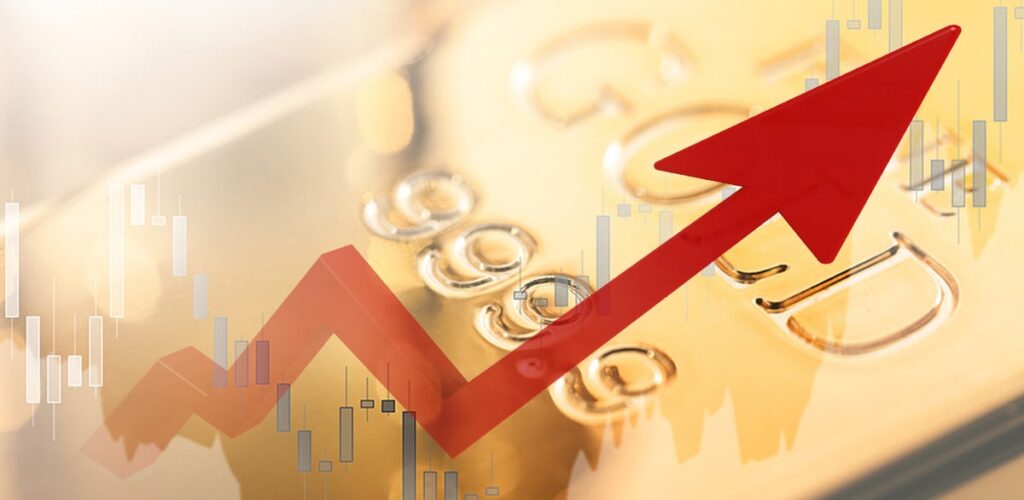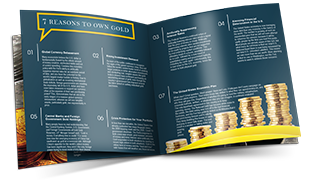Click here to get this article in PDF
 Over the past few years, we’ve highlighted the steady increase in gold demand to our readers. It’s unsurprising when the demand for gold ebbs and flows as with any other asset, but we’re in the midst of a veritable modern-day gold rush. Everyone from retail and institutional investors to central banks is scooping up more gold in anticipation of worsening economic conditions. Smart money is paying attention to this rising gold demand and taking cues from the biggest players in the game.
Over the past few years, we’ve highlighted the steady increase in gold demand to our readers. It’s unsurprising when the demand for gold ebbs and flows as with any other asset, but we’re in the midst of a veritable modern-day gold rush. Everyone from retail and institutional investors to central banks is scooping up more gold in anticipation of worsening economic conditions. Smart money is paying attention to this rising gold demand and taking cues from the biggest players in the game.
Demand for Gold in Numbers
Simply saying gold demand is at all-time highs doesn’t give investors much to work with. Fortunately, there are several metrics that demonstrate exactly where we stand in the landscape of precious metals investing.
Central bank gold demand skyrockets.
Central bank gold demand reached a 55-year high in 2022 with a whopping 1,136 tons added to reserves across the globe. This represents an 18% jump with total holdings reaching 4,741 tons by year’s end. The record-breaking fourth-quarter binge of 1,337 tons could have been the closing exclamation point on annual demand, but the beginning of 2023 proved it to further the trend. The demand for gold surged even higher with quarter-one purchases setting a first-half record with 387 tons. It’s worth noting that the lion’s share of these gold purchases went unreported which means many nations prefer to keep their reserves a mystery.
“The bigger central banks…and nations…are buying a ton of gold. Take a page out of their book.”– Founder Eric Sepanek
Emerging markets dominate gold purchases.
The US might still hold the largest gold reserves in the world, but the vast majority of recent central bank gold demand is concentrated in emerging markets. Burgeoning economies such as China, Russia, India, and Turkey have dominated gold buying since the 2010s. In fact, these countries accounted for 65% of total gold demand between 1999 and 2021, according to the International Monetary Fund. China has been at the head of the pack as of late with nine consecutive months of gold buying going into mid-2023. In total, the PBOC’s reserves have jumped by 103 tons, accounting for 4% of global supply.
Gold’s price performance strengthens.
Gold prices have a positive correlation with gold demand. In other words, prices tend to jump higher as purchases increase. This can have a positive feedback loop as investors become eager to lock in a lower cost basis before gold’s value increases. As a result, recent gold price performance can shed light on how demand might look in the future. The average gold price in 2003 was $363.83/oz. Today, gold hovers around $1,900/oz. That represents more than 421% of growth within the past three decades alone. Experts anticipate this exponential growth to continue in the future as demand for gold steadily increases.

Learn everything you should know about investing in precious metals.
Request the Free Guide
Gold buying outpaces selling.
Central banks consistently buy and sell gold depending on domestic demands, market behavior, economic pressure, and various other factors. As a result, real insights lie in the net trends. In other words, investors should be asking themselves whether central banks are buying or selling more gold overall. Once again, the numbers are clear: Gold demand is outpacing gold sales by a significant margin. From January 2022 to May 2023, only three months saw net sales from central banks. This trend is indicative of a larger transition from net gold selling in the 1990s and 2000s to a period of booming central bank gold demand that’s still ramping up.
What Investors Can Learn From Booming Gold Demand
Gold is a reliable store of value.
Governments might be running a fiat-based economy on the surface, but they’ve never stopped stockpiling gold. That’s because gold is one of the most reliable stores of value. Since the 1930s, the dollar has depreciated by 99% when compared to gold’s value. Unironically, that’s precisely when the US abandoned the gold standard. Gold demand remains high because governments know the fiat-based economy isn’t stable.
The worst is yet to come.
Central bank gold demand tends to peak during times of peak economic uncertainty. As a reliable hedge against inflation, gold is the asset of choice when mainstream markets buckle. Lately, central banks have been stockpiling gold at record rates which demonstrates the lack of faith our financial czars have in the global economy. No matter what they might try to get us to believe, these leaders aren’t confident in the future.
The dollar’s dominance is over.
Another crucial lesson investors can learn from increased central bank gold demand is the reality of the dollar’s decline. Despite being the sole world reserve currency, the greenback no longer offers the protection, security, and stability foreign countries seek. This is leading to a seismic shift in the global economy as countries pursue de-dollarization to limit their dependence on USD.
Gold prices are headed higher.
The sharp rise in central bank gold demand is expected to place significant upward pressure on gold value in the not-so-distant future. The gold price forecasts for 2023 look extremely healthy with some experts even predicting a $4,000/oz price point. While it’s impossible to guess precisely where prices will land, it’s safe to assume the steadily increasing demand for gold will drive gold values higher.
Translating Gold Demand Into a Personal Investment Strategy
The average person can gain valuable insights by watching the moves of institutional investors, but this knowledge isn’t inclusive of personal risk tolerance, budget limitations, and long-term goals. That’s why working with a reputable and experienced precious metals advisor is crucial when investing in gold. These experts can help you determine the most effective and efficient investment strategy based on your unique needs and objectives. Get in touch with one of our precious metals advisors by calling toll-free at 1-888-812-9892 or by using our live chat function.
